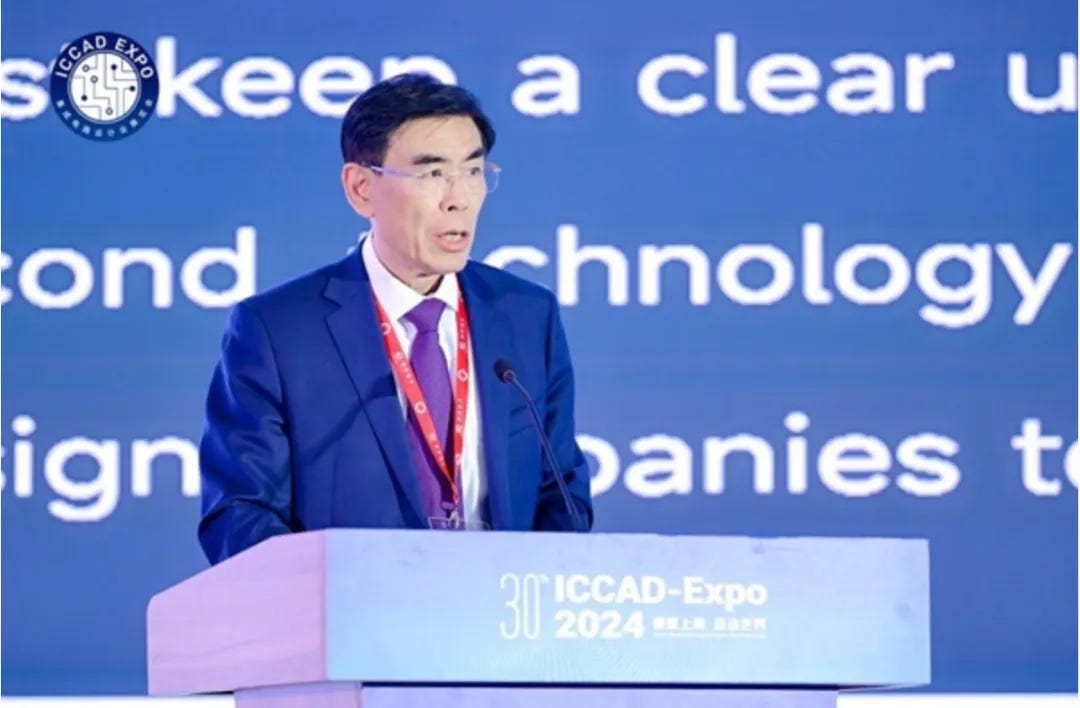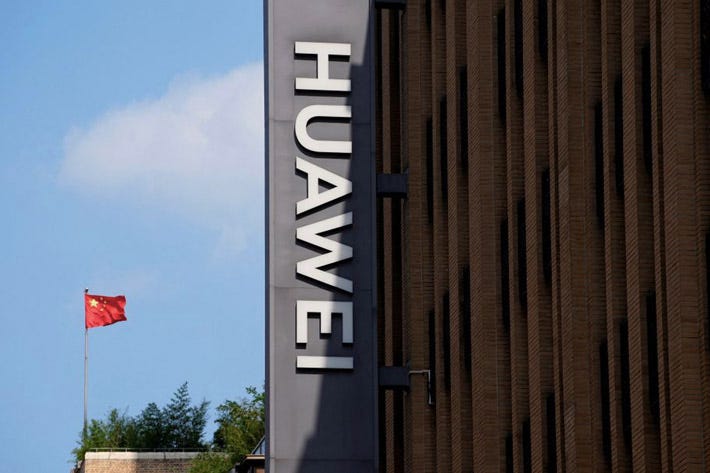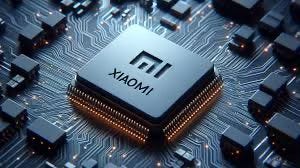China's chip design "path dependence"
The problems in China's chip design industry inhabit low industrial concentration, the middle and low end of the market, increased enterprise operating costs, and "internal volume" of the industry.
China's "path dependence" chip design
By China Electronic Newspaper
On December 11, at the Shanghai Integrated Circuit 2024 Industrial Development Forum and the 30th Integrated Circuit Design Industry Exhibition (ICCAD-Expo 2024), Wei Shaojun, chairman of the Integrated Circuit Design Branch of the China Semiconductor Industry Association, made the statement “China chip design industry should be self-improvement”.
Wei Shaojun said that up to now, China's chip design enterprises have reached more than 3,600; the sales scale of China's chip design industry has reached 646.4 billion yuan, an increase of 11.9% compared with 2023; in 2024, it is expected that 731 enterprises will sell more than 100 million yuan, an increase of 10 6 families. While achieving remarkable development results, there are still some problems to be solved in China's chip design industry. In this regard, Wei Shaojun put forward five major development suggestions.
Wei Shaojun pointed out that at present, the problems in China's chip design industry mainly focus on low industrial concentration, products at the middle and low end of the market, increased operating costs of enterprises, and "internal volume" of the industry.
At present, the development speed of China's chip design industry is gradually slowing down, and industrial growth is also facing great growth pressure. Statistics show that in the 20 years from 2004 to 2023, the average annual compound growth rate of China's chip design industry reached 24.8%, which is much higher than the growth rate of global semiconductor products. In 2023, the global semiconductor market shrank by 8.2%, and the annual growth rate of China's chip design industry reached 8% in the same period. However, in 2024, although China's chip design industry reached a two-digit growth of 11.9%, WSTS predicts that the growth of the global semiconductor industry is expected to reach 19% in 2024. This is the first time in recent years that the annual growth rate of China's chip design industry is lower than that of global semiconductors. At the same time, the goal of high-end transformation of product quality in China's chip design industry has not been completed. Judging from the statistics, the main battlefield of China's chip design industry is still concentrated in the fields of communication and consumer electronics, with a share of only about 10% in the computer field, which is obviously different from the proportion of 25% of the international computer chips in the market.
Wei Shaojun put forward five suggestions on how to achieve sustainable industrial development.
First, products are the foundation for chip design companies to settle down, and they should persistently improve product competitiveness. Products must withstand the inspection of the market and meet the needs of customers. If you only pay attention to the market opportunities brought about by policy inclination and ignore the quality and competitiveness of your own products, it will be a matter of time to lose in the fierce competition. The improvement of product competitiveness requires repeated iteration and unremitting efforts to improve, and "one-hammer trading" cannot be done.
Second, technology is the foundation for the survival of chip design companies, and it is necessary to establish processes and methods suitable for their own products. Without superb technology, it is almost impossible to make first-class products. Chip design enterprises should continue to cultivate in the field of traditional design technology, broaden, deepen and thicken the foundation, and establish a complete set of processes and methods suitable for their own products in design methodology; they should also strengthen the connection with manufacturing enterprises. The relationship between some leading chip design enterprises and manufacturing OEMs is no longer a simple relationship between entrustment and being entrusted, but a technical partner and comrades-in-arms fighting side by side in the same trench. The virtuous cycle of chip design enterprises pulling the technological progress of sub-working enterprises and sub-working enterprises supporting the continuous evolution of the design company's products has appeared and is working well.
Third, innovation is the only magic weapon to win the competition in the new era. We should make good use of the advantages of China's applied innovation. In addition to technological innovation in the traditional sense, we should pay more attention to the role of applied innovation in chip design. Chip design engineers often think that we are far away from the application and do not pay attention to the application. In fact, application innovation has always been the strength of Chinese people. Relying on a huge market of 1.4 billion people, the space for application innovation is huge, which is also the advantage of China's chip design industry.
Fourth, vigorously develop chip design technology that does not rely on advanced technology. There are two technical paths worth exploring: one is architecture innovation, which is currently the golden age of computer architecture innovation; the other is microsystem integration, which has evolved from packaging technology to three-dimensional integration technology, is gradually moving to the forefront.
Fifth, abandon "path dependence" and build your own product technology system. Path dependence is a shortcut for followers. Now it's time to make up your mind to develop your own technological ecosystem, otherwise you will never be able to get rid of the passive situation.
NB: Input from Ji Xiaoting, Zhang Xinyi, Maria, Lian Xiaodong
https://mp.weixin.qq.com/s/vPUXfo5ul_nDJs0loN5JnQ

China catches up fast in AI race, but US chip curbs cast shadow
By SCMP
Abundant investment and an open-source approach have pushed China to the AI forefront, but a lack of advanced chips may prove devastating
Shi Yuxiang is eager to find out what the latest artificial intelligence (AI) technology has to offer in video-making. But with OpenAI’s long-awaited Sora video generation tool launching only earlier this month, the 34-year-old entertainment industry professional from Beijing has been experimenting with a wide range of Chinese alternatives.
“Whenever there’s a new product release, I’ll give it a try,” Shi said. If a certain tool impressed him, he would pay for a subscription.
Shi is among the many tech-savvy Chinese users spoiled by a bevy of home-grown generative AI (GenAI) services, as tech giants and cash-flush start-ups battle for customers in a fast-growing market. As of November, regulators had approved 252 GenAI services for public release in the country.
Chinese companies have been rushing to fill the void left by world-leading AI players from Microsoft-backed OpenAI to Google, whose GenAI services remain officially unavailable to the world’s largest internet population.
While mainland businesses initially fell behind their Western peers in the AI arms race triggered by OpenAI’s release of ChatGPT late in 2022, Chinese firms have moved up quickly this year.
When OpenAI teased Sora early in February and provided limited access to a group of testers, it looked like China’s AI players, already hindered by escalating US chip curbs, were lagging behind.
https://www.scmp.com/tech/big-tech/article/3292447/tech-war-2024-china-catches-fast-ai-race-us-chip-curbs-cast-shadow
China’s Huawei, SMIC ‘to Ramp Production’ of Newest AI Chip
By Vishakha Saxena
Chinese technology giant Huawei and chipmaker Semiconductor Manufacturing International Corp (SMIC) are aiming to begin mass-production of China’s most advanced homegrown artificial intelligence chip, starting next year, according to Reuters.
Huawei is racing to rival US chipmaker Nvidia with its AI chips at a time when increasing export restrictions by Washington — and its allies — are slowing the growth of China’s tech industry.
As part of that effort, Huawei plans to start mass producing the Ascend 910C, its newest AI chip offering in China, in the first quarter of 2025, Reuters said, citing sources familiar with the matter.
SMIC, China’s largest contract chipmaker, will make the 910C on its N+2 process, it added.
Huawei is aiming to ramp up production even as the yield – the proportion of chips that come off the manufacturing line fully functional – of its advanced AI semiconductors remains far below industry standards.
Advanced chips need yields of more than 70% to be commercially viable — lower yields mean greater costs and higher defect rates.
But SMIC is currently producing the 910C on older, stockpiled chipmaking equipment, which has limited the chip’s yield to around 20%, Reuters said, citing a source.
Even Huawei’s current most advanced processor, the SMIC-made 910B, has a yield of only around 50%, forcing Huawei to slash production targets and delay filling orders for that chip, the sources said.
US restrictions slowing production
Both Huawei and SMIC are US-sanctioned firms, and their access to chip tech has been restricted further by Washington’s tightening export control rules.
Chinese chipmakers have remained cut-off from the most advanced chipmaking systems — extreme ultraviolet lithography (EUV) technology — since 2020. That was after the US barred Dutch manufacturer ASML — a firm with a near-monopoly in the production of EUV systems — from selling those machines to China.
Starting this year, ASML has also been restricted from selling its most advanced versions of second-tier deep ultraviolet lithography (DUV) machines to China. Some Chinese fabs are also restricted from buying older ASML DUV models.
The restrictions have hampered Huawei’s ability to improve the yield of its advanced AI chips. And low yields mean the firm will continue to struggle to make enough chips to meet wider demand in China.
“Huawei knows there is no short-term solution, given the lack of EUVs, so it will give priority to strategic government and corporate orders,” a source told Reuters.
It remains to be seen how many of those orders Huawei will manage to fill, however.
TikTok’s Chinese parent, ByteDance, for instance, ordered more than 100,000 Ascend 910B chips this year. But its had received fewer than 30,000 as of July, a pace too slow meet the company’s needs.
Other Chinese technology companies that have ordered from Huawei have complained of similar problems, sources told Reuters.
Challenge for Nvidia
Still, Huawei and SMIC’s ability to mass produce the 910C in any capacity will prove to be a challenge for Nvidia.
The US chipmaker — currently the most valuable company in the world — commanded a roughly 90% share of China’s AI chip market before US restrictions in 2022 meant it could no longer sell its most advanced chips in the country.
By the end of 2023, China accounted for around 17% of Nvidia’s revenue, sliding from 26% two years earlier.
Nvidia is currently developing a version of its “Blackwell” chip series for Chinese customers, dubbed “B20”, which would be the most advanced semiconductor the US chipmaker can sell in China. But uncertainty looms around whether it will be allowed to do so.
Meanwhile, Huawei’s 910C is capable of performing better than Nvidia’s B20 chip, an analyst at industry research firm SemiAnalysis told the Washington Post in August.
That was after Huawei had begun sending samples of the chip to internet and telecom companies. It has now also sent the chip’s samples to some technology firms and started taking orders, according to Reuters.
Even at a low yield, the ability to promise better performance that Nvidia’s best chip in China would be a huge leg up for Huawei. Commercially it will have the backing of Beijing, which is trying to make the world’s second-biggest economy self-sufficient in advanced semiconductors.
In May, Beijing set up a near $48 billion fund to boost the semiconductor sector.
Huawei and SMIC, meanwhile, have been among the biggest beneficiaries of state support.
In 2023, Huawei received over $1 billion in government grants, according to the South China Morning Post. SMIC received $360 million worth of subsidies.
More restrictions loom
SemiAnalysis also told WaPo that Huawei “could produce 1.3 million to 1.4 million 910C chips next year if it doesn’t face additional US restrictions.”
But that remains unlikely with Donald Trump’s return to the White House in January. Trump has made tough-on-China trade policies core to his economic agenda.
In the days after his election, Taiwanese chipmaker TSMC — the world’s largest contract chipmaker — notified all its Chinese AI chip customers it would stop producing their advanced processors.
That was after one of TSMC’s chips had been found in a Huawei 910B process, and the US ordered the Taiwanese chipmaker to halt shipments of advanced chips to Chinese customers.
https://www.asiafinancial.com/chinas-huawei-smic-to-ramp-production-of-newest-ai-chip
Huawei Mate 70 runs on SK Hynix chips instead of China-made options
By Emiko Matsui
Huawei Mate 70 series chip mystery is being solved with new teardowns and the latest one reveals that the flagship phones run on SK Hynix chips instead of China-made alternatives. The company still relies on foreign materials to some extent.
TechInsights performed a teardown of the Huawei Mate 70 Pro, revealing SK Hynix chips in the device. It shows that the phone equips 12GB low-power DRAM SoC and a 512GB NAND processor to ensure accurate RAM and storage capabilities.
Meanwhile, the Mate 70 Pro+ uses the same NAND processor with a 16GB DRAM. SK Hynix made these 14nm DRAMs via EUV (Extreme Ultraviolet Lithography).
DRAM or Dynamic Random Access Memory in smartphones stores data in cells temporarily. Whereas, NAND processors help in flash storage and store data like photos, videos, and music. It retains the device data even when it is off.
Inputs reveal that Huawei might have used SK Hynix chipsets due to limited Chinese options. The company is struggling with the supply chain problems following the US ban. The sanctions also hit the OEM with a lack of high-end chipmaking tools.
When asked to SK Hynix about this implementation, it said:
“…we have been strictly complying with the relevant policies since the restrictions against Huawei were announced and have also suspended any transactions with the company since then.”
TechInsights further revealed that most of the P and Mate models run on SK Hynix chips. Although the trend changed with the Mate 60 Pro launched last year.
Mate 60 Pro entered the world with China-made processors. Huawei even tied up with ChangXin Memory Technologies (CXMT) and Yangtze Memory Technologies Corporation (YMTC) to take supplies of DRAM and NAND processors.
Nova 13 Pro uses CXMT DRAM and YMTC NAND chips. Thus, TechInsights expected Huawei to use the native processors for its newly launched flagship models.
“… as we expected Huawei to use memory devices from CXMT for DRAM and YMTC for NAND.” – said TechInights senior analyst Jeongdong Choe.
Even though the SK Hynix chips found in Mate 70 models aren’t much advanced, the implementation hints that Huawei is still facing challenges to overcome chip tech problems. The 14nm chips are still reliable and have higher production yields in the market. Thus, it offers significant performance in all aspects.
https://www.huaweicentral.com/huawei-mate-70-runs-on-sk-hynix-chips-instead-of-china-made-options/
Xiaomi in-house chip for 2025
[News] Xiaomi Rumoured to Develop Mobile Chips to Rival Qualcomm and MediaTek, Targeting 2025 Production
China’s push for self-sufficiency in chips in the face of rising US restrictions is gaining momentum, with device maker Xiaomi working on an in-house mobile processor expected to be mass produced next year.
Xiaomi aims to join Apple and Google in designing its own semiconductors for smartphones, and succeed where domestic rival Oppo failed, which closed down its chip design subsidiary Zeku in May 2023.
The biggest challenge for Xiaomi will be in finding a suitable contract manufacturer, as Taiwan Semiconductor Manufacturing Company faces rising pressure from US authorities to halt shipments of advanced chip to customers from mainland China.
Meanwhile, domestic leader Semiconductor Manufacturing International Corp is restricted from importing the most advanced chipmaking equipment, with Netherlands-based ASML unable to renew export licenses covering maintenance and spare parts for deep ultraviolet lithography equipment to clients in China.
Xiaomi has been pushing to develop its own semiconductors since 2019, when it acquired a 6 per cent stake in chip designer Shanghai-based VeriSilicon.
Its Q3 R&D expenses rose 20 per cent year-on-year to CNY6 billion ($826.8 million).
Many of China’s smartphone brands, such as Oppo and vivo, adopt processors from Qualcomm and MediaTek for their latest flagship products. However, according to Bloomberg, Xiaomi is now developing a self-designed mobile processor for future smartphones, expected to enter mass production in 2025.
The 2025 timeline highlights Xiaomi’s determination to join a growing wave of tech giants investing in semiconductors amid the U.S.-China Chip war, the report adds. Chinese authorities have reportedly been urging local companies to minimize reliance on foreign technology, and Xiaomi’s initiative aligns with this objective.
It is worth noting that previous rumors cited by Wccftech suggested that Xiaomi might release its custom solution in the first half of 2025, with its performance said to be equivalent to Qualcomm’s Snapdragon 8 Gen 1, which was released two years ago.
Neverthelss, the Bloomberg report also points out that succeeding in the smartphone chip market is notoriously challenging. Intel and NVIDIA, along with Xiaomi’s competitor Oppo, have struggled to make a significant impact, the report states, adding that only Apple and Google have successfully transitioned their entire device lineups to self-designed silicon.
On the other hand, South Korean smartphone giant Samsung grapples with the unstable yield of its in-house Exynos processors. Xiaomi’s predecessor, Huawei, may be one of the examples that consistently relies on its in-house, homegrown Kirin chips.
According to the report, building in-house chipmaking expertise could bolster Xiaomi’s ambitions not only to create more competitive smartphones but also to develop smarter, more connected electric vehicles.
Earlier in October, Xiaomi introduced a luxury variant of its SU7 electric sports car, claiming that the model will be the fastest four-door car in production, directly competing with brands like Tesla and Porsche, according to Reuters.
Nevertheless, Bloomberg also brings up concerns that Xiaomi’s emerging semiconductor efforts could create challenges for the chipmaker handling its production, particularly as TSMC faces growing pressure from U.S. authorities to limit business with mainland Chinese clients.









